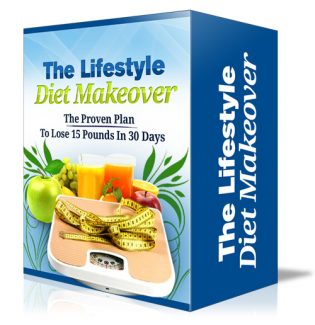 License Type: Private Label Rights
License Type: Private Label Rights  File Type: ZIP
File Type: ZIP
 SKU: 59946
SKU: 59946  Shipping: Online Download
Shipping: Online Download
Ebook Sample Content Preview:
Introduction: Why Most People Fail With Losing Weight (When They Really Don’t Have To)
People struggle with losing weight. Sure, there are tons of reasons for this – convenience of unhealthy food, peer pressure, lack of focus, lack of dedication, lack of motivation, lack of knowledge concerning proper nutrition...
The list goes on.
You likely know several people that want to lose weight right now, or that have tried in the past. Maybe they DID lose weight, but most people that DO lose weight end up gaining most (if not all) of it back within a year.
Marketers and the media capitalize on this niche of consumers like vultures. They hawk their latest and great diet fads, contraptions for losing weight and getting in shape with increasingly less work and effort, and worst of all: everything sounds like the next best thing. (Yeah... if only.)
With new diet and weight loss books, programs, courses, and “silver-bullet” solutions coming out every single day promising rapid results with less effort than ever, where do you even start?
Well, what if I told you that you DON’T need the latest and greatest fad or contraption? What if I told you that I can break down in just these pages exactly how to lose weight – and keep it off – without breaking your back OR the bank?
One guy – Tom Ness – lost 15 pounds in 30 days (actually, it was only 28 days) using this information. In fact, it was one of the easiest things he’s ever done. And now I’m going to tell you exactly how he did it.
To be blunt, you only need to do three things:
1) Restructure your diet
2) Workout in a way that burns fat while adding muscle
3) Build in a system of accountability
If you do these three things, you can’t fail. In the following pages I’m going to show you the easiest ways to do all three.
Chapter 1:
Diet Lifestyle Reconstruction
First things first: if you want to lose weight, you need to immediately change how you eat.
If you’re not thin and lean (or at least where you want to be), then you must realize that what or how you’re currently eating is keeping you fat.
I can already hear the excuses:
“I don’t eat that bad...”
“I don’t want to give up some of the things I eat...”
“I don’t have money to eat healthy...”
Awesome. Any more excuses? May as well get them out right now before we go on, because things need to change if you want to see results.
This isn’t a “diet”. “Diets” don’t work because we (as a society) associate them with holding back, starvation, and pain. Even the word “diet” conjures up a mental image of a half-empty plate, hunger pains, and a set period of deprivation.
Does this sound familiar?
You see or read about a new program to get in shape and lose the pounds, so you decide to give it a go. You get all hyped up to start your new program, get everything all ready and prepare your meals in advance, and do really good for a couple days. Maybe you even make it a week. Hell, some people even make it two.
But then, one day, you wake up for work late. You didn’t prepare your meal in advance and don’t have time to pack anything before you leave. At work on your break, your only option is fast food because you don’t have time for anything else. Either that or you’re really hungry and just want something fast, so you cave for that one meal (or two).
But that night, realizing you’ve already blown your “diet” for the day, you decide to just make it a cheat day and splurge. Now it’s Thursday night and you’ve blown your nutrition out of the water. Mentally lashing yourself, you decide to renew your healthy vigor tomorrow.
But that next night – Friday night – you’re invited to go out. Everyone’s having a couple drinks and you obviously don’t want to be the one person out NOT drinking, so you have a drink. One turns into two or three (or more), and after the bar everyone including you is hungry so you get something to eat. The only places open late are the greasy, fried places, but you’ve been drinking and are hungry so you say “Oh what the hell” and get something anyway.
Realizing your diet is now shot, you decide to just take the weekend off and start again on Monday. Monday will be the day; you’ll do really well on Monday...
That's what happens to most people when they go on "diets". They almost set them themselves up for failure before they even begin.
Instead of “going on a diet”, you need to restructure your lifestyle. Lifestyle changes last longer than diet plans because they fundamentally change what you eat and how you view your health and nutrition.
Sure, you can go on a “diet plan” for let’s say 30 days and follow it to the letter. But what happens after those 30 days (if you even make it there)? Are you just going to do that plan again, and again?
After you stop, unless you’ve changed your habits – your lifestyle – you’re going to revert to your older, unhealthy habits that you’ve spent the last 30 days trying to undo.
That’s why you need to develop the mentality that this is a lifestyle change. You need a permanent solution to nutrition, which comes down to proper education and a game plan to be healthy.
You don't want a limited-time solution; you need a permanent one that will allow you to get the pounds off and keep them off, and NOT gain everything back as soon as you finish the program.
With all of that said, let me tell you exactly how Tom personally restructured his diet to drop pounds almost effortlessly – while still feeling full most of the time!
Chapter 2:
The “5 Pillars” Of Weight Loss And Why You Need Them To Make It Work
Here are the basics of this program. Consider these the “Pillars” of this reconstruction phase:
Pillar #1: Stick to five 400-calorie meals per day.
Here’s an unpopular fact: there’s a strong correlation between the calories you consume and how much you weigh. (Crazy, eh?)
However, this is the most important part of this program since it’s what you actually consume on a daily basis. If you’re going to lose weight, you need to regulate what you eat. You need to know what’s being consumed and what it’s doing for your body.
For the first week of this program, eat four 400-calorie meals and drink at least 8 cups of water each day (I’d recommend drinking even more than that). This is to reduce the amount of food traveling in your body and “clean” you out. Consider this your healthy body cleanse.
After the first week, eat five 400-calorie meals. Note that you’re consuming the same amount of calories each meal, you’re just eating one more meal each day than you were in the first week.
Not only does this breakdown make for a consistent meal plan, it also makes each meal that much more important. If you only have 1,600-2,000 calories to work with each day, you need to make sure you’re planning them out correctly so your body gets the proper nutrition.
Pillar #2: Make sure you consume Monounsaturated Fats with every meal.
Not all fats are created equal. Yes, you want to avoid some fats like Trans Fat. To scare yourself, go ahead and Google “why is trans fat bad?”. I’ll leave that one to Google to tell you.
So what about good fat? Those would be the monounsaturated fats.







